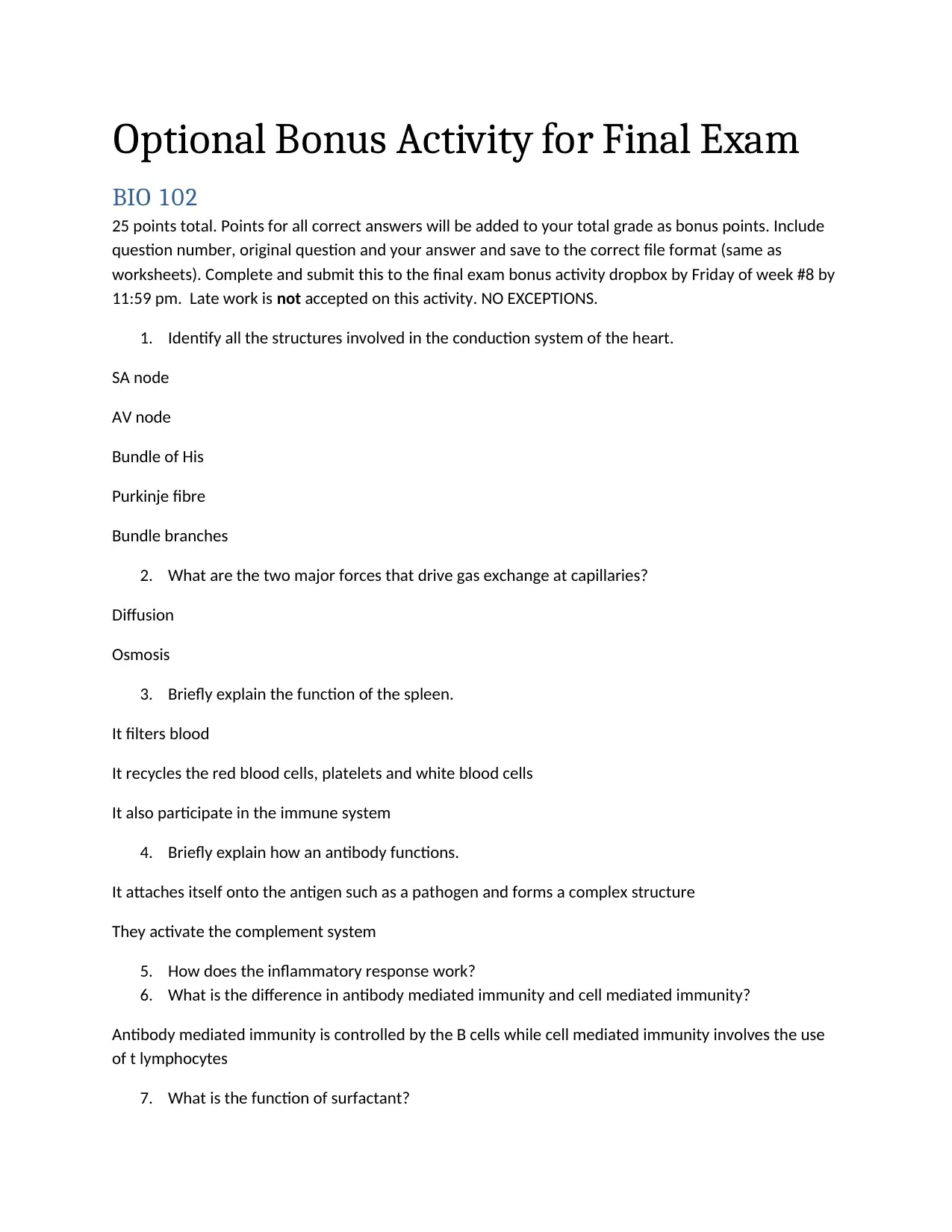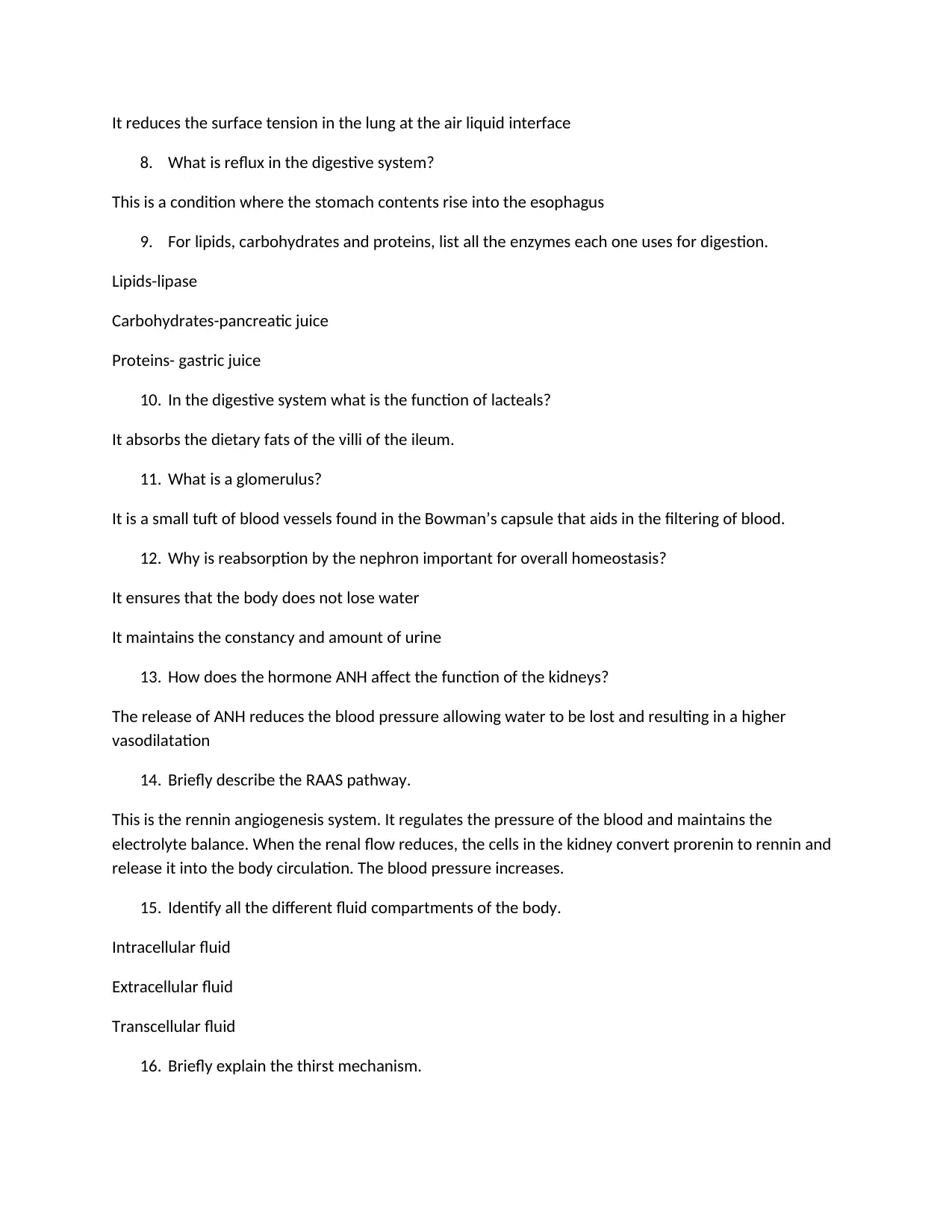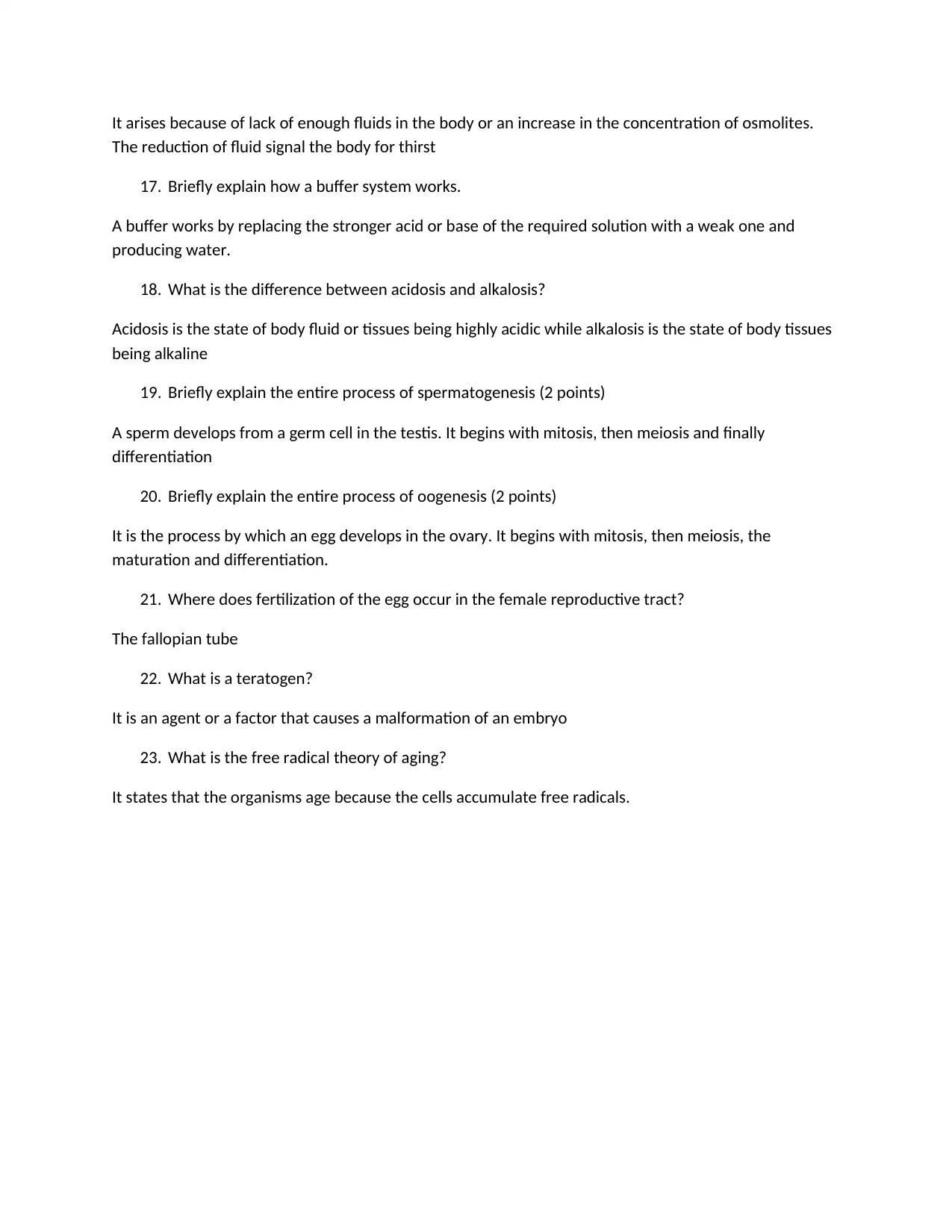BIO 102 - Final Exam Bonus Activity: Biology Systems and Processes
VerifiedAdded on 2023/01/18
|3
|729
|39
Homework Assignment
AI Summary
This document presents a comprehensive solution to the BIO 102 final exam bonus activity, addressing key concepts in biology. It includes detailed answers to questions on the heart's conduction system, gas exchange, spleen function, antibody mechanisms, and the inflammatory response. The solution further explains the differences between antibody-mediated and cell-mediated immunity, the function of surfactant, and the process of reflux in the digestive system. Additionally, it covers enzymes involved in lipid, carbohydrate, and protein digestion, lacteals' function, the glomerulus, the importance of reabsorption, the role of ANH, the RAAS pathway, fluid compartments, the thirst mechanism, buffer systems, acidosis, alkalosis, spermatogenesis, oogenesis, fertilization, teratogens, and the free radical theory of aging. This resource provides a thorough understanding of essential biological processes and systems.
1 out of 3




![[object Object]](/_next/static/media/star-bottom.7253800d.svg)